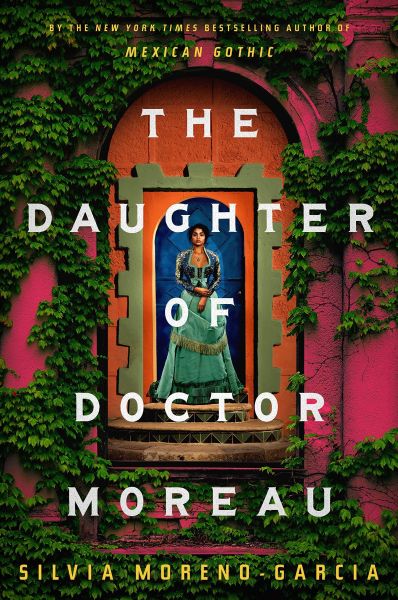Could’ve Been a Nightmare
The Daughter of Doctor Moreau
By Silvia Moreno-Garcia

15 Jul, 2022
Silvia Moreno-Garcia’s 2022 The Daughter of Doctor Moreau is a stand-alone historical SF novel.
Hernando Lizalde provided the visionary Dr. Moreau with funding and a secluded research facility in Yaxaktun. All Lizalde asked in return was that Moreau uplift animals and create a legion of docile workers, workers who could replace the rebellious Maya who had refused to work for bad wages under bad conditions (oh and the Italians1 who very inconsiderately succumbed to fatal disease).
But by 1877 Moreau has managed many failures and a few successes: some human-animal servants.
Moreau has a daughter, Carlotta, born of his late mistress. He keeps her close. Yaxaktun (Green Grotto) is all that Carlotta has known. The garden wasn’t such a bad place to grow up. Her father may be stern and aloof, but Carlotta has befriended the hybrid servants and the family retainer, Montgomery. There’s a large library and a tropical paradise outside her window. Outside Yaxaktun, the Caste War rages. But so far it has not touched the research facility.
A serpent enters paradise in the guise of Eduardo Lizalde, handsome son of Moreau’s patron. He arrives unannounced and asserts that his father Hernando is tired of pouring funds into Dr. Moreau’s research. If the doctor cannot provide a workforce, then at least he should surrender his existing hybrids to serve as soldiers against the rebels.
It does not take Eduardo long to decide that the doctor has another asset Eduardo would like to take away with him. While dark-skinned like her mother, Carlotta is beautiful. She would make a fine wife (or if Eduardo’s father objected to her complexion too forcefully, at least a desirable mistress).
Eduardo is easy on the eyes. Carlota is smitten in return. However, she learns that if she goes away with Eduardo, he will make sure that research funding will continue uninterrupted. Carlotta finds that she is not prepared to be traded away like livestock.
~oOo~
I feel there needs to be a disclaimer that the status of women in the 19th century was generally terrible everywhere. If women in 1877 Mexico were worse off than the average 19thcentury woman, the status of the average woman was bad enough as it was.
The novel alternates between two perspectives, that of Carlota and that of retainer Montgomery. I found the Carlota sections much more compelling. As for Montgomery, if he wanted to play a more prominent part in this review, he should have tried harder and made better life choices.
Readers familiar with the H. G. Wells novel2 from which Moreno-Garcia takes her inspiration will be able to see various plot twists coming long before they arrive (For example, no mad scientist in fiction has ever tried to create a race of slaves without inspiring rebellion of one sort or another3.) For that matter, everyone familiar with the Caste War should suspect there’s no way for a research facility to sit in the middle of it without being impacted in some way.
However, there’s a lot more to books than mere surprise. What happens, what terrible secrets are revealed, are much less important than how Carlota and her companions react to them. The novel touches on much the same issues that Wells did, as well as certain others (like the status of women and why one should be judicious about accepting donations and sponsorship) that fell outside Wells’ concerns in the ur-novel.
The events of this novel are not exactly fun but they certainly are enthralling to watch. As usual for Moreno-Garcia’s works, I strongly recommend The Daughter of Doctor Moreau.
The Daughter of Doctor Moreau is available here (Amazon US), here (Amazon Canada), here (Amazon UK), here (Barnes & Noble), here (Book Depository), and here (Chapters-Indigo).
1: The history of migratory Italian workersin the 19th century is fascinating.
2: If you have not read the Wells, it is legally available here for free.
3: A modern-day mad scientist would be familiar with many works warning against creating servants. I am not sure which books of that nature would have been available to Moreau. Not Wells’ Island of Doctor Moreau, because it would not be published until 1896. Frankenstein perhaps, but Moreau does manage to avoid Victor’s mistakes.
